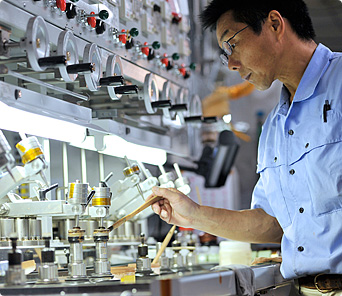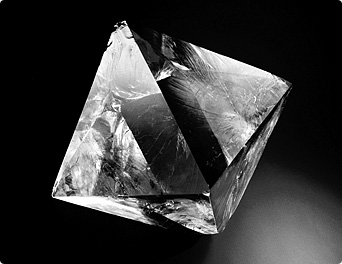Getting to grips with the peculiarity


A fluorite crystal
Mr. Okawa is in charge of polishing so-called "fluorite"* optical material. Since fluorite is a crystal, it exhibits the peculiarity of tending to assume a typical crystalline shape during polishing, observes Mr. Okawa.
When the fluorite for a convex lens is polished, this peculiarity is mitigated by polishing the central area of the lens first, so as to temporarily make this area lower and thus prevent the fluorite from taking on its typical form. This is followed by further polishing of the rest of the lens. This process is repeated until the lens has been finished and the desired shape achieved. In addition, various peculiarities appear during polishing when the level of the central part of the lens is higher or lower than the peripheral section of the lens.
"It is not possible to perceive the state of the polishing by eye. What is more, this state changes rapidly as polishing proceeds. You need to infer the state of the polishing and instantly make assessments as to what the best approach is, second by second. You need to be very resourceful in order to deal with the numerous peculiarities that arise," says Mr. Okawa.
"You get a sense of what is happening from the noise that the polishing machine makes as it is running, from the movement of the polishing plate, or sometimes just from laying your hand on the polishing plate." Mr. Okawa hones his senses so as to be able to divine the state of the polishing.
- *Fluorite: Calcium fluorite crystal (CaF2). It has outstanding optical-performance characteristics in the form of high transmittance of light and low dispersion.

